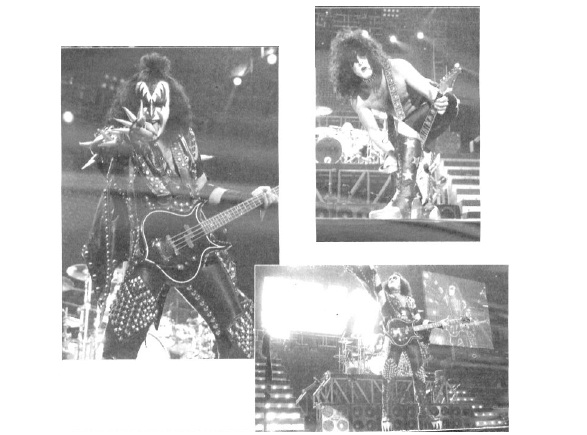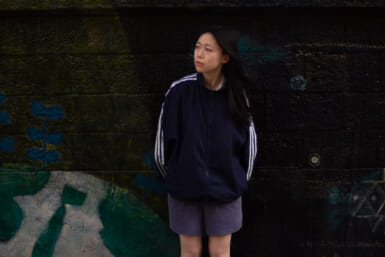by Susan Alexander
I’m sure everyone had a special idol growing up, that special heartthrob with whom you were obsessed.
At my school, Sacred Heart, in the mid-’70s, you had to choose between two groups of heartthrobs. It was either the Bay City Rollers, the clean-cut, boys-next-door, or KISS, the exotic, wild men of rock.
I liked KISS. Well, okay, not just like. I was passionate about them, much to my parents’ consternation. I loved them so much, I ripped down the wallpaper in my bedroom and plastered the bare walls with KISS posters. My mother was afraid to come into my room.
I was hooked on KISS after I first saw the cover for the 1976 album Destroyer. Their distinct kabuki-sci-fi costumes and individual make-up was a heady mix for a prim and proper 11-year-old.
My first KISS concert was at Budokan in 1978. It was life-altering, life-affirming, life-changing. I had an idea what to expect, but I would never have imagined anything to be that sugoi.
Their stage show was so unique and overpowering, it was impossible to ignore. The pyrotechnics, fire, fake blood, smashed guitars and fire breathing were all alien to me. And I loved it.
My father, Corky, hated it. Every morning, he would drive my sister Aline and me to school, and we would sing KISS songs at the top of our voices, innocent to the sexually explicit lyrics. Corky would be cringing. Now, I understand why.
One of KISS’ recent June gigs at Budokan was extra special to me. I’ve been to dozens of their concerts, but this time I had the honor and privilege of meeting my childhood heroes before they went on stage, and conducting a brief interview.
Walking up the gravel hill towards Budokan brought me back to my childhood. Twenty-six years and three daughters later, I still felt that inexplicable excitement.
Meeting the band was a monumental experience. They were larger than life, literally, with their seven-inch heels.
It wasn’t the original band I was meeting. “The Demon” Gene Simmons (bass) and “The Star Child” Paul Stanley (vocals/guitar) reunited with Peter Criss (drums) and Ace Frehley (lead guitar) for the Farewell Tour a couple of years ago. But since then, the band has continued its World Tours with other members covering for Criss and Frehley. For these concerts, it was Eric Singer on drums and Tommy Thayer on lead guitar.
As I chatted with the band, Stanley explained why these lineup changes haven’t proved to be a problem.
“The cool thing about KISS is that, at this point, people may not know all the names of the members, but if you go around the world and show a picture of KISS, everyone knows KISS.
“So what we have built over the last 30 years are the lour icons, which are the images, and they are bigger than any one of us. To change that because someone comes or goes would be crazy, and ultimately the fans and public lose out, because all of a sudden you have a giraffe boy in the band, everybody is going to go, ‘That’s ridiculous!'” said singer Stanley.
He elaborated by jokingly saying KISS is like a sports team, with all the players seated on the bench until summoned to play.
All too quickly, the meeting with my heroes was over. Concert time. On stage, they were as fresh as ever. I closed my eyes, and the band still sounded as they did at my first concert 26 years ago. Stanley and Simmons are both 54, yet still full of exuberance.
Most of the audience were in their 30s and 40s — with kids in tow — and many were aping their favorite band member by wearing full make-up. It was also amazing to see the older fans rocking out next to their kids. Being part of “The KISS Army” is special; at concerts there is an immediate bond that is shared.
KISS has been around for 32 years, performed more than 3,500 concerts, with more than 78 million fans cheering them on from around the world. And they keep on going. Band members may come and go, but KISS still gives its fans “The Greatest Rock ‘N’ Roll Show on Earth.”
Whatever happened to the Bay City Rollers?
I’m sure everyone had a special idol growing up, that special heartthrob with whom you were obsessed.









